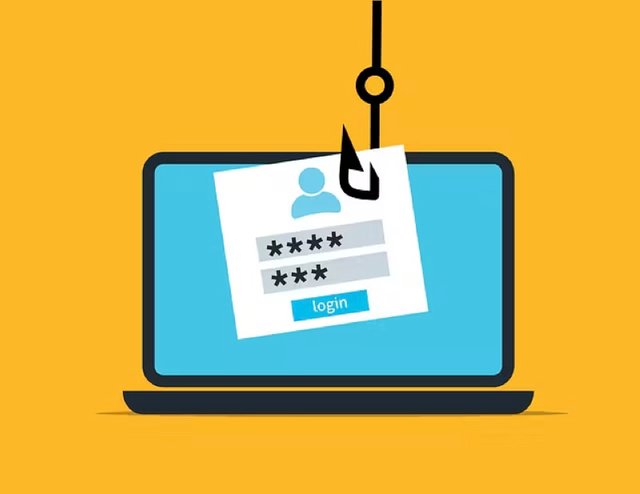Ethereum Phishing Scams on the Rise: How to Protect Your Crypto

Scams in the cryptocurrency world are all too common, and an already bad problem grew worse in February. According to an article on Bitcoin.com, phishing scammers were able to siphon over $47 million worth of crypto from accounts in February 2024 alone.
But how do they do this? And how can you ensure you aren’t the next victim? We’ve got all that and more below, so keep reading.

Phishing Scams Are on the Rise
Unfortunately, one of the easiest scams to perpetuate (and for users to be fooled by) is phishing scams, and scammers in these spaces are only getting better and better at doing so.
In February 2024, users of ERC-20 tokens on the Ethereum, Arbitrum, and Binance platforms were the main targets, and scammers were able to get away with $47 million in tokens belonging to over 57,000 people. $8 million, was stolen in a single day, February 15th.
These scammers perpetuate these scams by creating fake social media accounts, then sending links to unsuspecting victims. They also use email messages, often urging individuals to verify their account or an unusual login attempt. Either way, the email is fake, but once the link is clicked, the scammers can get information that will allow them to scam their victim.
The information stolen, varies, based on the scam. In some scams, login information is stolen, and for others, the victim gives the scammer signing power over their account, allowing the scammer to spend from their account until it is empty.
Related: Warning: New Crypto Scam on Telegram
How the Scammers Fool Victims
The number one reason phishing scams work is because these scammers create accounts or emails that look like they are from a legitimate source. And even if there are a few errors, the sense of urgency they instill often causes the user to click the link before evaluating the email carefully.
How to Stop a Phishing Scam
The number one way to stop a phishing scam is by not clicking the malicious link you are sent, but we know that these scammers are getting better and better, and that is easier said than done. Below we have a few ways to check the legitimacy of an email or message to hopefully help you out.
1. How to Spot a Phishing Email
Phishing emails can look very similar to the official emails sent by the company that the scammer is impersonating. But here are some quick ways to check if the email is legit BEFORE you click any links.
·Check the sender’s address. Legit emails should come from an email address in which the business name is spelled correctly, and the domain name is the exact same as the website the email says it is from.
·Scroll to the bottom of the email. The copyright should be the same as the website. If the capitalization or spelling here is different, or it just looks funky, it’s probably a scam.
·Check who the email is addressed to. It should be sent to you, and only you, not “undisclosed recipients” or a bunch of email addresses you don’t recognize.
If you are still in doubt after checking these, DO NOT click any links in the email. Instead, go to the app or website for that company from your browser, and log in from there. If it is a real alert, you should see it in your inbox as well.

2. How to Spot a Phishing Social Media Account
Fake social media accounts are even harder to spot, especially if the perpetrator just swaps a single letter. Here are some ways to spot fake social media accounts.
·Check the spelling. The spelling should match the website exactly, with no special characters.
·Look at the follower count. Any legit company will have a high follower count and they won’t be following a lot of accounts either.
·Look at the followers. A legit company will be followed by other legit companies, and people in your similar demographic. If you scroll through the followers and see bots or accounts that don’t match you (such as porn accounts or a bunch of attractive-looking college girls), then this is not the official account of said business.
·Go to the website. Go to the business website, scroll to the bottom, and use one of the links to navigate to their social media. If it’s not the same account you just saw, then the first one is 100% fake. You can also message support from the website and ask.
Either way, if a social media account ever sends you a link, don’t click it. Instead, go to the company's website and contact support on-site. Remember, if it sounds too good to be true, it probably is.
Additionally, you can always check a website like scam sniffer, which can show you current and operating scams. Websites like Reddit often have threads about common scams that you can reference for help.
Related: How to Avoid Social Media Fake Crypto Scams
What to Do if You Spot a Scam
There is an official form for reporting known scams to the FTC. However, we find that scams often evolve too quickly to be found on this platform. The scamming we mentioned above, happened in a number of days. By the time the FTC wrote a report about a particular scam, you could already be out hundreds of dollars.
Instead, we recommend contacting the company the individual is using to scam you. The company can often put out an email to all its users, warning them to be on the lookout for the scams. They can also post resources on their website specific to their users.
You can also make a Reddit thread or post on your social media; just please contact the company first!
No matter what you decide to do, please stay vigilant because some of these scammers are getting really good, and we want to put a stop to them siphoning money from accounts.
We hope this article has helped you to learn how to avoid phishing scams. Just remember to pause and look at an email before panic-clicking any link, and you should be okay!
You May Also Enjoy: How to Upgrade Your Online Security
This article was brought to you by the Crypto Sportsbook on MintDice - bet on your favorite teams today! Originally posted to MintDice.com.